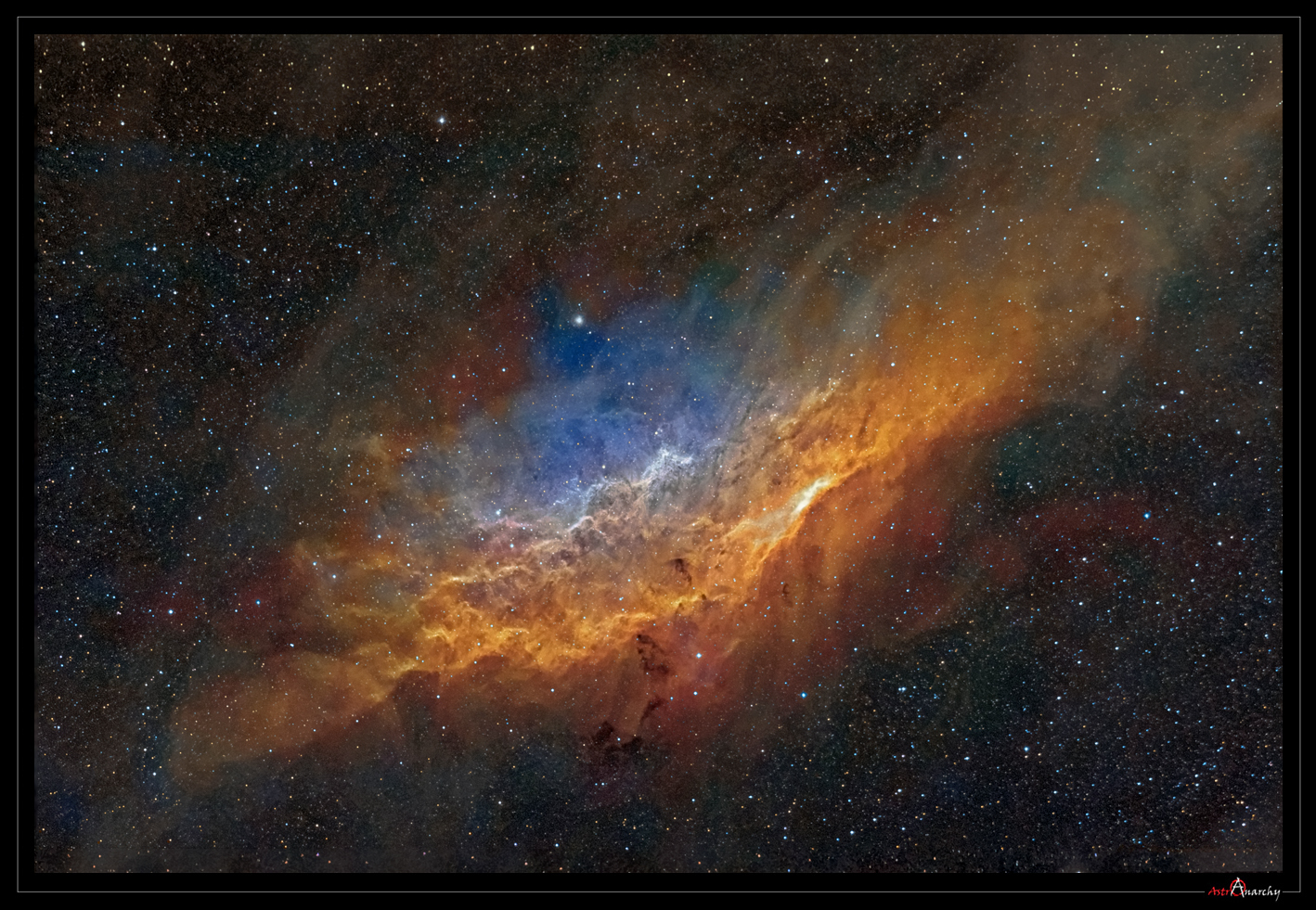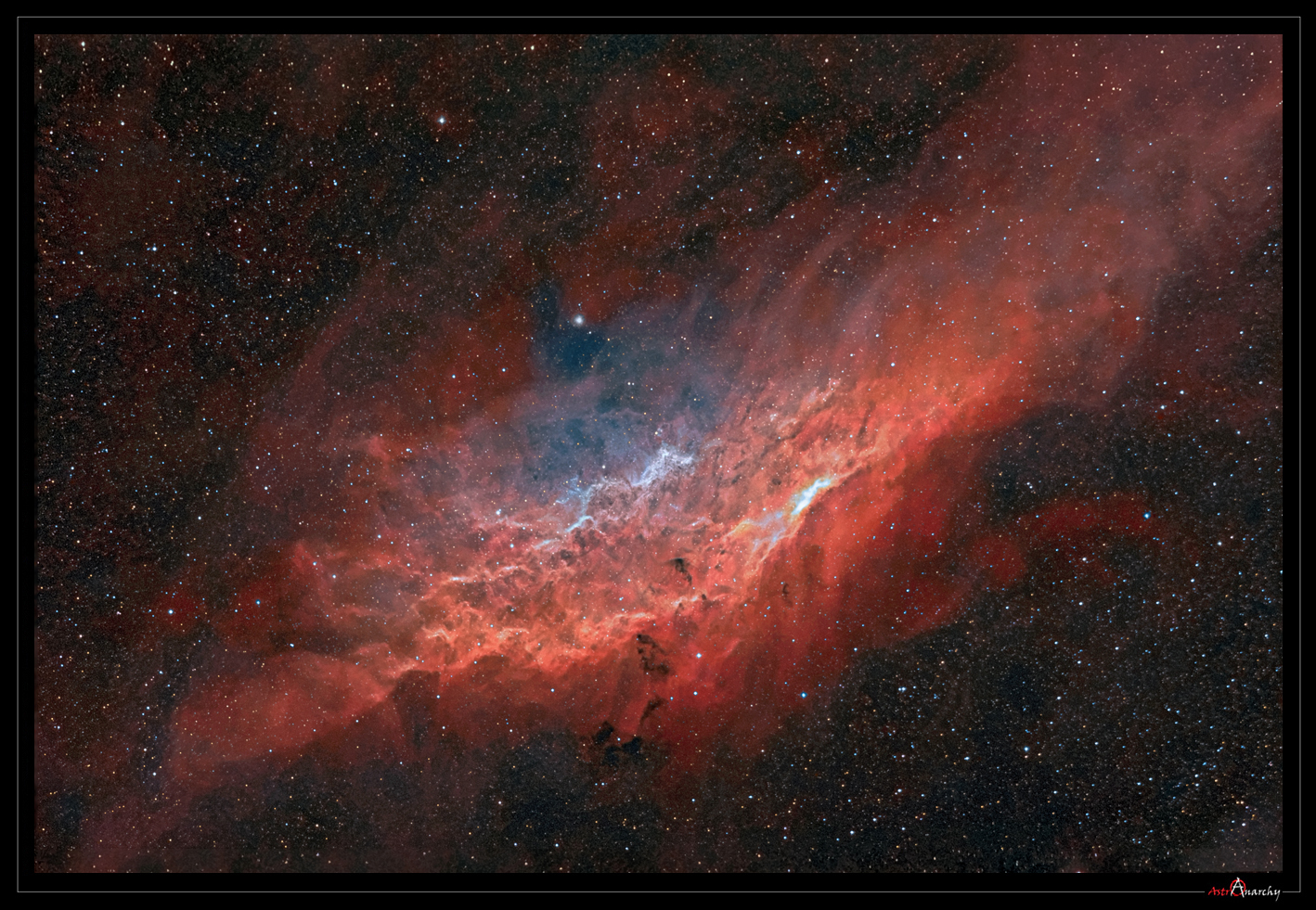Since my processing technique gets better and we don't have any astronomical darkness until mid September, I have reprocessed some older images. There is now better star colors and other processing is tweaked too.
NGC1499, the "California Nebula"
RA 04h 03m 18.00s Dec +36° 25′ 18.0"
Click for large images
NGC 1499, the "California Nebula" locates in constellation Perseus. Distance is about 1000 light years.
The nebula covers about 2,5 degrees of sky.
HST-palette composition from emission of ionized elements, R=Sulfur, G=Hydrogen and B=Oxygen.
Narrowband data was used for Star colors, mixture of channels was the same as in "natural" color composition image below.
To see the size of this object (the apparent angular scale) in a sky, I have made some image series to demonstrate it. Please, have a look HERE.
Natural color composition from the emission of ionized elements, R=80%Hydrogen+20%Sulfur, G=100%Oxygen and B=85%Oxygen+15%Hydrogen to compensate otherwise missing H-beta emission. This composition is very close to a visual spectrum.
All the exposures, I have taken for this object, are used. Total exposure time is now about 20h together.
Two camera lenses was used to capture the data, a Tokina AT 300mm f2.8 and a Canon EF 200mm f1.8, both lenses was used at full aperture. Baader narrowband filter set was used, H-alpha, O-III and S-II
QHY8, cooled astronomical camera, was used with Tokina lens and a newer QHY9 with a Canon lens.
The original versions with imaging data:
and
As an addition, there is a longer focal length closeup image of NGC1499 used to boost details in mid section of the wide field image. Original post and details here: http://astroanarchy.blogspot.com/2010/12/ngc-1499-california-nebula-closeup.html
A natural color composition from the emission of ionized elements, R=80%Hydrogen+20%Sulfur, G=100%Oxygen and B=85%Oxygen+15%Hydrogen to compensate otherwise missing H-beta emission. This composition is very close to a visual spectrum.
Technical details for the detail
Telescope, Meade LX200 GPS 12" @ f5
Camera, QHY9 Guiding, SXV-AO @ 4,5Hz
Image Scale, 0,75 arcseconds/pixel
Baader H-alpha 7nm 27x1200s, binned 2x2 = 9h



0 comments:
Post a Comment